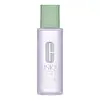What's inside
What's inside
 Key Ingredients
Key Ingredients

 Benefits
Benefits

 Concerns
Concerns

 Ingredients Side-by-side
Ingredients Side-by-side

Water
Skin ConditioningGlycereth-26
HumectantBis-PEG-18 Methyl Ether Dimethyl Silane
EmollientPolysorbate 20
EmulsifyingSucrose
HumectantNymphaea Alba Flower Extract
Skin ConditioningSodium Hyaluronate
HumectantTrehalose
HumectantDipotassium Glycyrrhizate
HumectantCaffeine
Skin ConditioningGlutamic Acid
HumectantAspartic Acid
MaskingSerine
MaskingLeucine
Skin ConditioningAlanine
MaskingLysine
Skin ConditioningArginine
MaskingTyrosine
MaskingPhenylalanine
MaskingProline
Skin ConditioningThreonine
Valine
MaskingIsoleucine
Skin ConditioningHistidine
HumectantGlycine
BufferingSqualane
EmollientPassiflora Incarnata Flower Extract
Skin ConditioningLeontopodium Alpinum Extract
Skin ConditioningLythrum Salicaria Extract
AstringentHordeum Vulgare Extract
EmollientTriticum Vulgare Germ Extract
Skin ConditioningTocopherol
AntioxidantSodium PCA
HumectantLinoleic Acid
CleansingGlycerin
HumectantButylene Glycol
HumectantUrea
BufferingSodium Palmitoyl Proline
Skin ConditioningCholesterol
EmollientSodium Levulinate
Skin ConditioningDipropylene Glycol
HumectantCitric Acid
BufferingPolyvinyl Acetate
Emulsion StabilisingTriacetin
AntimicrobialBHT
AntioxidantSodium Citrate
BufferingSodium Benzoate
MaskingPotassium Sorbate
PreservativeChlorphenesin
AntimicrobialSorbic Acid
PreservativeDisodium EDTA
Polyquaternium-51
Skin ConditioningTromethamine
BufferingCarbomer
Emulsion StabilisingParfum
MaskingPhenoxyethanol
PreservativeEthylhexylglycerin
Skin ConditioningWater, Glycereth-26, Bis-PEG-18 Methyl Ether Dimethyl Silane, Polysorbate 20, Sucrose, Nymphaea Alba Flower Extract, Sodium Hyaluronate, Trehalose, Dipotassium Glycyrrhizate, Caffeine, Glutamic Acid, Aspartic Acid, Serine, Leucine, Alanine, Lysine, Arginine, Tyrosine, Phenylalanine, Proline, Threonine, Valine, Isoleucine, Histidine, Glycine, Squalane, Passiflora Incarnata Flower Extract, Leontopodium Alpinum Extract, Lythrum Salicaria Extract, Hordeum Vulgare Extract, Triticum Vulgare Germ Extract, Tocopherol, Sodium PCA, Linoleic Acid, Glycerin, Butylene Glycol, Urea, Sodium Palmitoyl Proline, Cholesterol, Sodium Levulinate, Dipropylene Glycol, Citric Acid, Polyvinyl Acetate, Triacetin, BHT, Sodium Citrate, Sodium Benzoate, Potassium Sorbate, Chlorphenesin, Sorbic Acid, Disodium EDTA, Polyquaternium-51, Tromethamine, Carbomer, Parfum, Phenoxyethanol, Ethylhexylglycerin
 Reviews
Reviews

Ingredients Explained
These ingredients are found in both products.
Ingredients higher up in an ingredient list are typically present in a larger amount.
Butylene Glycol (or BG) is used within cosmetic products for a few different reasons:
Overall, Butylene Glycol is a safe and well-rounded ingredient that works well with other ingredients.
Though this ingredient works well with most skin types, some people with sensitive skin may experience a reaction such as allergic rashes, closed comedones, or itchiness.
Learn more about Butylene GlycolGlycerin is already naturally found in your skin. It helps moisturize and protect your skin.
A study from 2016 found glycerin to be more effective as a humectant than AHAs and hyaluronic acid.
As a humectant, it helps the skin stay hydrated by pulling moisture to your skin. The low molecular weight of glycerin allows it to pull moisture into the deeper layers of your skin.
Hydrated skin improves your skin barrier; Your skin barrier helps protect against irritants and bacteria.
Glycerin has also been found to have antimicrobial and antiviral properties. Due to these properties, glycerin is often used in wound and burn treatments.
In cosmetics, glycerin is usually derived from plants such as soybean or palm. However, it can also be sourced from animals, such as tallow or animal fat.
This ingredient is organic, colorless, odorless, and non-toxic.
Glycerin is the name for this ingredient in American English. British English uses Glycerol/Glycerine.
Learn more about GlycerinSodium Hyaluronate is hyaluronic acid's salt form. It is commonly derived from the sodium salt of hyaluronic acid.
Like hyaluronic acid, it is great at holding water and acts as a humectant. This makes it a great skin hydrating ingredient.
Sodium Hyaluronate is naturally occurring in our bodies and is mostly found in eye fluid and joints.
These are some other common types of Hyaluronic Acid:
Learn more about Sodium HyaluronateTrehalose is a disaccharide made of two glucose molecules (glucose is sugar!). Trehalose is used to help moisturize skin. It also has antioxidant properties.
As a humectant, trehalose helps draw moisture from the air to your skin. This helps keep your skin hydrated.
Due to its antioxidant properties, trehalose may help with signs of aging. Antioxidants help fight free-radical molecules, unstable molecules that may damage your skin.
In medicine, trehalose and hyaluronic acid are used to help treat dry eyes.
Some animals, plants, and bacteria create trehalose as a source of energy to survive freeze or lack of water.
Learn more about TrehaloseWater. It's the most common cosmetic ingredient of all. You'll usually see it at the top of ingredient lists, meaning that it makes up the largest part of the product.
So why is it so popular? Water most often acts as a solvent - this means that it helps dissolve other ingredients into the formulation.
You'll also recognize water as that liquid we all need to stay alive. If you see this, drink a glass of water. Stay hydrated!
Learn more about Water